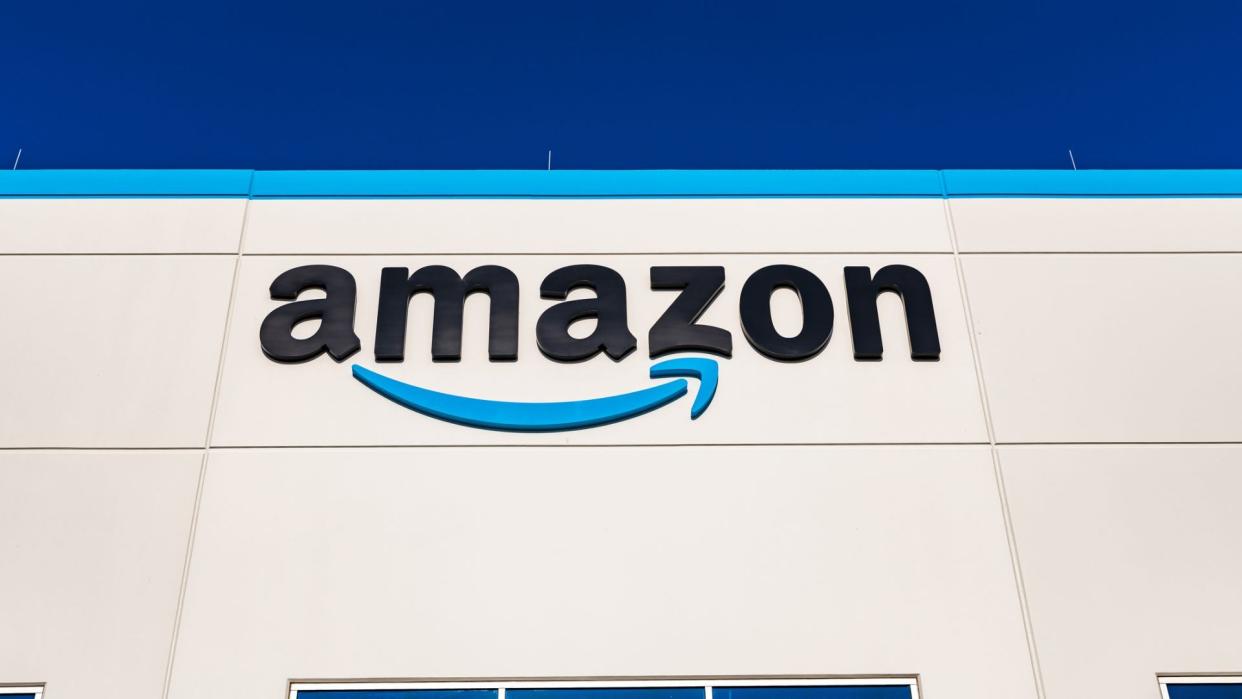Amazon Replaces Walgreens in the Dow: Which Stock Is a Better Investment for You?

Amazon.com is replacing Walgreens Boots Alliance in the 30-stock Dow Jones Industrial Average on Feb. 26, to reflect “the evolving nature of the American economy,” and to “increase consumer retail exposure as well as other business areas in the DJIA,” Dow Jones said in a statement. In other words, investors who invest in Dow Jones stocks will now have exposure to Amazon’s stock and its performance.
Discover More: 10 Valuable Stocks That Could Be the Next Apple or Amazon
See Now: 6 Genius Things All Wealthy People Do With Their Money
“The index change was prompted by DJIA constituent Walmart Inc.’s decision to split its stock 3:1, which will reduce Walmart’s index weight due to the price weighted construction of the index,” Dow Jones further added.
As CNN reported, Amazon joins Apple and Microsoft as the third company from the so-called “Magnificent Seven,” a group of high-performing tech stocks, to join the Dow 30.
“Historically, getting added to or dropped from the Dow hasn’t had a significant impact on companies’ stock performances,” CNN reported, adding, however, that the presence in the index “comes with a certain level of cachet.”
As of Feb. 26, shares of Amazon were up 16.7% year-to-date and 86.6% in the past year.
Read Next: 8 Best Cryptocurrencies To Invest In for 2024
What’s Best for Investors?
According to Peter C. Earle, senior economist at the American Institute for Economic Research, the reasons for Walgreens’ exit from the Dow Jones Industrial Average are inauspicious. He explained that on June 26, 2018, Walgreens was added to the DJIA at a price of $66.57 per share, by the start of 2024 the price had fallen to roughly $26 per share. Around that time it slashed its dividend to try to shore up its weakening balance sheet.
“While fortunes vary from firm to firm, drugstore chains have faced a number of challenges over the past decade or so ranging from changes in the delivery in healthcare to opioid settlements to increasing competition with digital upstarts. It’s a tough business that’s getting tougher,” added Earle.
Several experts agree with this position. For instance, Peter Cohan, associate professor of management practice at Babson College, believes one should invest in companies that exceed high growth targets and raise their forecasts every quarter.
He added, however, that in comparing Amazon to Walgreens, you do not have to do that much work to realize that Amazon is “a much better bet.”
“The drugstore chain’s removal from the Dow is bad for the stock. That’s because money from investors aiming to own the Dow index will flow out of Walgreens — which could benefit Amazon’s stock,” he said.
Cohan also argued that Amazon’s stock has more than doubled since bottoming out at the end of 2022 and that its upward trajectory should continue as long as the company can beat and raise in future quarters.
“Unfortunately, Amazon beat expectations but fell short on its forecast in its most recent quarter. In short, Amazon is not a perfect investment but it’s better than Walgreens,” he added.
Beyond Immediate Implications
Some experts argued that retail investors should look beyond the immediate implications of Amazon replacing Walgreens in the Dow and, instead, focus on fundamental analysis and market trends.
Liam Hunt, director at SophisticatedInvestor.com, noted that Amazon offers potential growth driven by technological innovation and market expansion. It also has a diverse business model, spanning from online retail to cloud services. The leading e-commerce and cloud computing giant provides a broad revenue base that appeals to investors looking for multi-faceted, long-term growth opportunities.
On the other hand, Hunt said, Walgreens, as a staple in the healthcare and retail pharmacy sector, presents a different investment profile.
“It offers stability and potential resilience during economic downturns due to the non-discretionary nature of its products. Additionally, Walgreens’ focus on healthcare innovation and expansion into primary care services could present new growth avenues,” he said.
According to him, Amazon might suit those with a higher risk tolerance and a long-term investment perspective, seeking growth and innovation.
On the other hand, Walgreens could appeal to investors prioritizing stability, dividend income and lower volatility.
“At the end of the day, the choice between Amazon and Walgreens depends on matching the stock’s characteristics with the investor’s financial goals, risk tolerance, and investment strategy,” he noted. “Those with a greater appetite for risk and volatility would likely be better served by allocating a greater share of their portfolio to Amazon over Walgreens.”
More From GOBankingRates
What Makes a Good Bank in 2024, According to a Banking Expert
I'm a Personal Finance Writer: These Are the Worst Money Mistakes I Made in 2023
This article originally appeared on GOBankingRates.com: Amazon Replaces Walgreens in the Dow: Which Stock Is a Better Investment for You?
